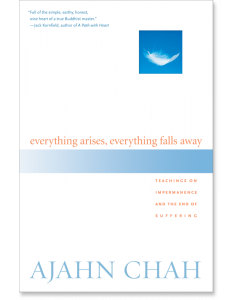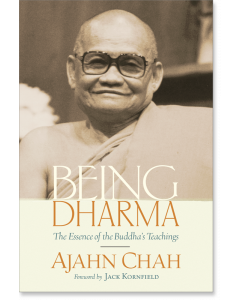Related to Theravada Buddhism: Insight Meditation | Southeast Asian Buddhism | Thai Forest Traditions | Theravada Buddhism
More in Buddhism: All Buddhism | Zen & Chan | Tibetan Buddhism | Taoism | Explore by Topic
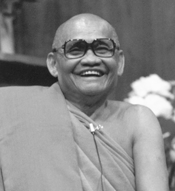

Ajahn Chah (1919–1992) was a beloved Thai Buddhist master whose teachings were refreshingly uncompromising in their clarity and certainty—the certainty of a meditator who has achieved deep understanding of the Buddha's teachings. He was an important influence and spiritual mentor for a generation of American Buddhist teachers.
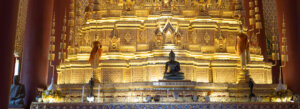
Theravada Buddhism: A Guide for Readers

Related to Theravada Buddhism: Insight Meditation | Southeast Asian Buddhism | Thai Forest Traditions | Theravada Buddhism
More in Buddhism: All Buddhism | Zen & Chan | Tibetan Buddhism | Taoism | Explore by Topic
Over the past few years we at Shambhala Publications have been focused on bringing the depth and richness of the traditions of Theravada Buddhism more into the light. Modernist and secularizing processes have been the lens through which many see "Theravada". A consequence of this is that some people's understanding of the traditions it encompasses are often either oversimplified ("it's Insight Meditation with a lot of the cultural paraphernalia"), incomplete ("Its vipassana as taught in Thai temples"), or incorrect ("it's for one's own liberation only"). These biases mean many miss out on the full story which is that the highly varied practices and teachings form a vast, creative, and immensely powerful tradition for transforming the mind and gaining liberation. Here are some of our books, recent as well as classics, that explore some of these topics.
A host of new books in this area will be published in 2023. Check back soon!
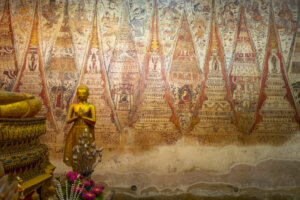
An illuminating introduction to the contemporary world of Theravada Buddhism and its rich culture and practices in modern mainland Southeast Asia.
Theravada translates as “the way of the Elders,” indicating that this Buddhist tradition considers itself to be the most authoritative and pure. Tracing all the way back to the time of the Buddha, Theravada Buddhism is distinguished by canonical literature preserved in the Pali language, beliefs, and practices—and this literature is often specialized and academic in tone. By contrast, this book will serve as a foundational and accessible resource on Theravada Buddhism and the contemporary, lived world of its enduring tradition.
Brooke Schedneck has done extensive research on topics such as religions of Southeast Asia, contemporary Buddhism, gender in Asian religions, and religious tourism. Narrowing in on topics such as temples, monastic lives, lay Buddhists, meditation, and Buddhist objects, Schedneck highlights the thriving diversity of Theravada Buddhists today. Exploring Theravada as a lived religion reveals how people apply various expressions in everyday life. She presents to readers the most important practices and beliefs of Theravada Buddhists, illustrated through contemporary debates about what represents proper Theravada practice within Cambodia, Myanmar, Laos, and Thailand in the twenty-first century. Additionally, practical information is provided in appendices about what temples and practice centers readers can visit as well as a temple etiquette guide offering tips for being a respectful visitor. While academics will benefit from and appreciate this overview, the writing offers a refreshing introduction to a complex tradition for readers new to the subject.
Until Nirvana’s Time presents forty-five Dharma songs, whose soaring melodies have inspired Cambodian Buddhist communities for generations. Whether recited in daily prayers or all-night rituals, these poems speak to our deepest concerns—how to die, how to grieve, and how to repay the ones we love.
Introduced, translated, and contextualized by scholar and vocalist Trent Walker, this is the first collection of traditional Cambodian Buddhist literature available in English. Many of the poems have been transcribed from old cassette tapes or fragile bark-paper manuscripts that have never before been printed. A link to recordings of selected songs in English and Khmer accompanies the book.
An interdisciplinary deep dive into traditional Buddhist jhāna meditation and how it can transform our understanding of self and consciousness.
For centuries in Southeast Asia, oral yogāvacara (yoga practitioner) lineages kept traditional jhāna practices alive, but in the nineteenth and twentieth centuries, reforms in Theravāda Buddhism downplayed the importance of jhāna in favor of vipassanā (insight) meditation. Some began to consider the jhānas to be strictly the domain of monastics, unattainable in the context of modern lay life. In recent years, however, there has been a resurgence of interest in the jhānas, and as researcher Paul Dennison shows, the esoteric and sometimes “magical” pre-reform practices of Southeast Asia hold powerful potential for modern lay practitioners living in a more scientifically minded world. Drawing on traditional Buddhist doctrine, teachings from lesser-known meditation texts such as the Yogāvacara’s Manual, and findings from the first in-depth, peer-reviewed neuroscience study of jhāna meditation, Dennison unpacks this ancient practice in all its nuance while posing novel questions about perception, subjectivity, and the nature of enlightenment.

Drawing on a lifetime of research, scholar L. S. Cousins untangles the complex history of meditation practice from the traditions rooted in the Pali canon and commentarial literature. With authoritative explication of a range of Buddhist texts preserved primarily in the Pali language—canonical discourses, commentarial treatises, and rare meditation manuals—Cousins explores a multiplicity of meditation practices that have developed over the past two and a half millennia, from the jhāna (absorption) and vipassanā (insight) methods that constitute the core of modern Theravāda practice to lesser-known, esoteric practice lineages of Central and Southeast Asia that were nearly lost to history.
The Dīghanikāya or Long Discourses of the Buddha is one of the four major collections of teachings from the early period of Buddhism. Its thirty-four suttas (in Sanskrit, sutras) demonstrate remarkable breadth in both content and style, forming a comprehensive collection. The Art of Listening gives an introduction to the Dīghanikāya and demonstrates the historical, cultural, and spiritual insights that emerge when we view the Buddhist suttas as oral literature.
Theravada Buddhism, often understood as the school that most carefully preserved the practices taught by the Buddha, has undergone tremendous change over time. Prior to Western colonialism in Asia—which brought Western and modernist intellectual concerns, such as the separation of science and religion, to bear on Buddhism—there existed a tradition of embodied, esoteric, and culturally regional Theravada meditation practices. This once-dominant traditional meditation system, known as borān kammaṭṭhāna, is related to—yet remarkably distinct from—Vipassana and other Buddhist and secular mindfulness practices that would become the hallmark of Theravada Buddhism in the twentieth century. Drawing on a quarter century of research, scholar Kate Crosby offers the first holistic discussion of borān kammaṭṭhāna, illuminating the historical events and cultural processes by which the practice has been marginalized in the modern era.
In this comprehensive set of teachings, Buddhadasa Bhikkhu, perhaps the most influential Thai Buddhist of the twentieth century, introduces the Dhamma to lay practitioners in a relatable and powerful way. Beginning with an extensive discussion of spiritual practice and moving into specific teachings on Dhamma, this book will be an indispensable resource for Theravada Buddhists, Insight Meditation practitioners, and all readers interested in a profoundly committed modern approach to the Buddhist path.
by Kamala Tiyavanich
This work ingeniously intermingles real-life stories about nineteenth- and early twentieth-century Buddhist monks in old Siam (today’s Thailand) with experiences recorded by their Western contemporaries. Stories of giant snakes, bandits, boatmen, midwives, and guardian spirits collectively portray a Buddhist culture in all its imaginative and geographical brilliance. By juxtaposing these eyewitness accounts, Kamala Tiyavanich presents a new and vivid picture of Buddhism as it was lived and of the natural environments in which the Buddha’s teachings were practiced.
Published in Thailand under the title The Buddha in the Jungle.
By Chittadhar Hrdaya
Translated by Subarna Man Tuladhar and Todd Lewis
A translation of the modern Nepalese classic and winner of both the Toshihide Numata Book Award in Buddhism and the Khyentse Foundation Prize for Outstanding Translation.
This award-winning book contains the English translation of Sugata Saurabha (“The Sweet Fragrance of the Buddha”), an epic poem on the life and teachings of the Buddha. Chittadhar Hṛdaya, a master poet from Nepal, wrote this tour de force while imprisoned for subversion in the 1940s and smuggled it out over time on scraps of paper. His consummate skill and poetic artistry are evident throughout as he tells the Buddha’s story in dramatic terms, drawing on images from the natural world to heighten the description of emotionally charged events. It is peopled with very human characters who experience a wide range of emotions, from erotic love to anger, jealousy, heroism, compassion, and goodwill. By showing how the central events of the Buddha’s life are experienced by Siddhartha, as well as by his family members and various disciples, the poem communicates a fuller sense of the humanity of everyone involved and the depth and power of the Buddha’s loving-kindness.
For this new edition of the English translation, the translators improved the beauty and flow of most every line. The translation is also supplemented with a series of short essays by Todd Lewis, one of the translators, that articulates how Hṛdaya incorporated his own Newar cultural traditions in order to connect his readership with the immediacy and relevancy of the Buddha’s life and at the same time express his views on political issues, ethical principles, literary life, gender discrimination, economic policy, and social reform.
By Ajahn Sucitto
Buddhist teachings like the eightfold path, the four noble truths, and karma pervade Buddhist literature—but how often do we read what the Buddha himself had to say about these topics? Here is an accessible look at the Buddha’s First Discourse, which contains the foundation for all further Buddhist teaching.
Ajahn Sucitto offers a new translation of this revolutionary teaching, known as The Discourse That Sets Turning the Wheel of Truth. He then walks us through the text, offering engaging and practical point-by-point commentary that makes the Buddha’s words come alive and reveals how the text’s wisdom can inspire our own liberation.
While vipassana often takes center stage in presentations of Theravada in the west, this emphasis belies a wider set of practices, in particular the practice of samatha, or concentration. Known as jhana practice for the extraordinary states these practices bring, the are the emphasis in some traditions of teaching and in themselves lead to insight.
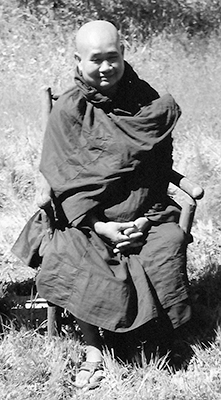
by Tina Rasmussen, Stephen Snyder, with a foreword by Pa Auk Sayadaw
This is a clear and in-depth presentation of the traditional Theravadin concentration meditation known as jhāna practice, from two authors who have practiced the jhānas in retreat under the guidance of one of the great living meditation masters, Pa Auk Sayadaw. The authors describe the techniques and their results, based on their own experience.
by Leigh Braisington
The jhānas are eight progressive altered states of consciousness that can be identified with the aspect of the Buddha’s Eightfold Path called Right Concentration. Training in concentration leads to these states, each of which yields a deeper and subtler state of awareness than the previous one. The jhānas are not in themselves awakening, but they are a skillful means for stilling the mind in a way that leads in that direction, and they are attainable by anyone who devotes the time and sincerity of practice necessary to realize them. Leigh Brasington’s guide to navigating the jhāna path is deeply informed by the view of them transmitted to him by his teacher, Ven. Ayya Khema, a view based on the Pali suttas.

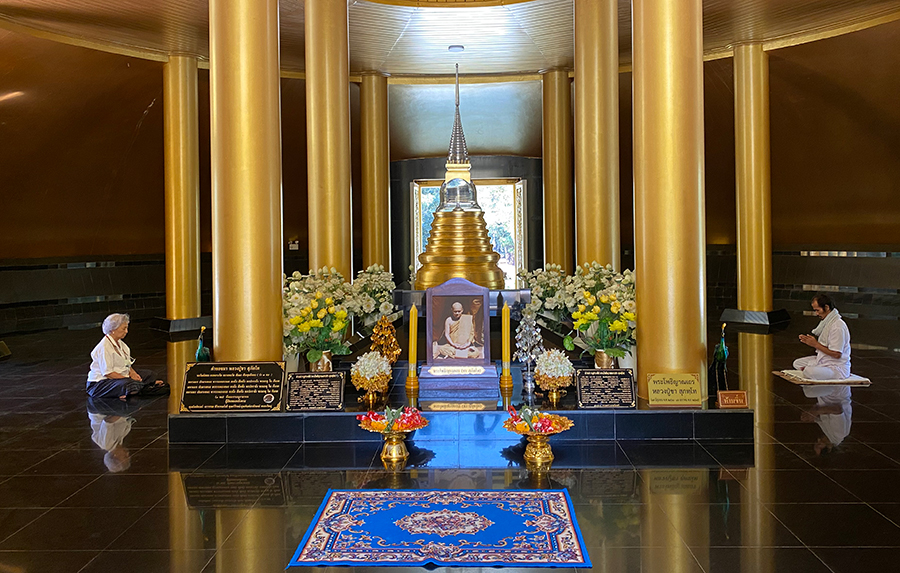
by Ajahn Chah
Ajahn Chah offers a thorough exploration of Theravadin Buddhism in a gentle, sometimes humorous, style that makes the reader feel as though he or she is being entertained by a story. He emphasizes the path to freedom from emotional and psychological suffering and provides insight into the fact that taking ourselves seriously causes unnecessary hardship.
by Ajahn Chah
Some books by Ajahn Chah have consisted of collections of short teachings on a wide variety of subjects. This book focuses on the theme of impermanence, offering powerful remedies for overcoming our deep-seated fear of change, including guidance on letting go of attachments, living in the present, and taking up the practice of meditation. Everything Arises, Everything Falls Away also contains stories and anecdotes about this beloved master's life and his interactions with students, from his youth as a struggling monk to his last years when American students were coming to study with him in significant numbers. These stories help to convey Ajahn Chah's unique spirit and teaching style, allowing readers to know him both through his words and the way in which he lived his life.
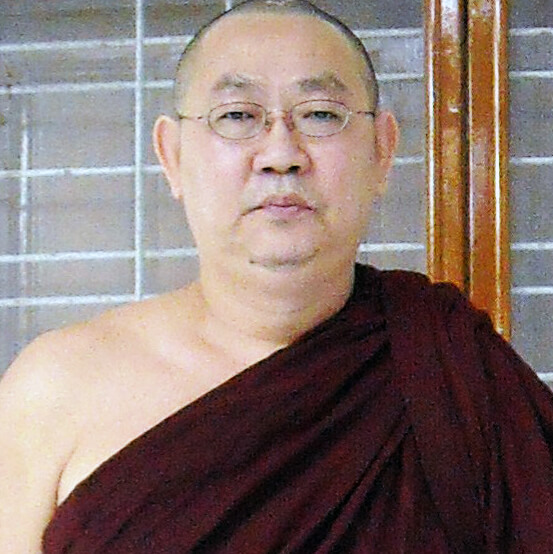
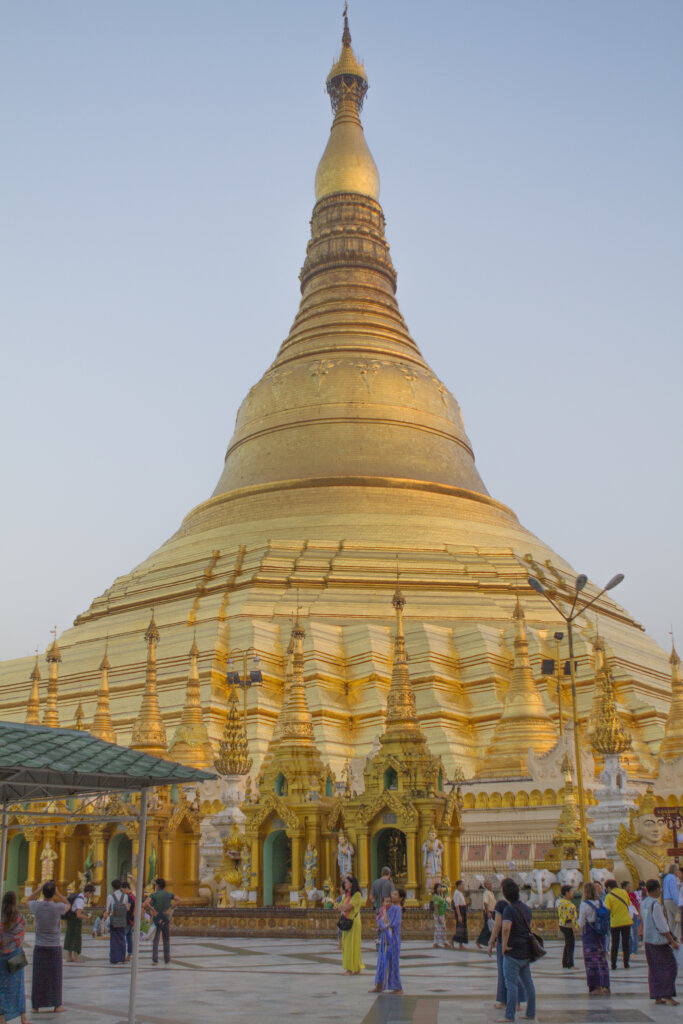
By Sayadaw U Tejaniya
Since mindfulness is known to be so physically, mentally, and spiritually beneficial, why not practice it right now? Why not in every moment? Burmese Buddhist master Sayadaw U Tejaniya writes that we can indeed practice in this way, and the key is not forceful effort but rather a continuous gentle remembering of our intention to renew our awareness. Thirty-one short chapters—“A Month of Daily Life Meditations”—show precisely how to build a daily life meditation practice that steadily develops relaxation, refreshment, and enlightenment.
by Sayadaw U Tejaniya
The flame of wisdom can be kindled in the midst of any life, even one that might seem too full of personal and professional commitments to allow for it. Such is the teaching of Sayadaw U Tejaniya, who himself learned to cultivate awareness in the raucous years he spent in the Burmese textile business before taking his final monastic ordination at the age of thirty-six. Train yourself to be aware of the clinging and aversion that arise in any situation, he teaches. If you can learn to do that, calm and deep insight will naturally follow. It’s a method that works as well for sorting the laundry or doing data entry as it does in formal sitting meditation. “The object of attention is not really important,” he teaches, “the observing mind that is working in the background to be aware is of real importance. If the observing is done with the right attitude, any object is the right object.”

